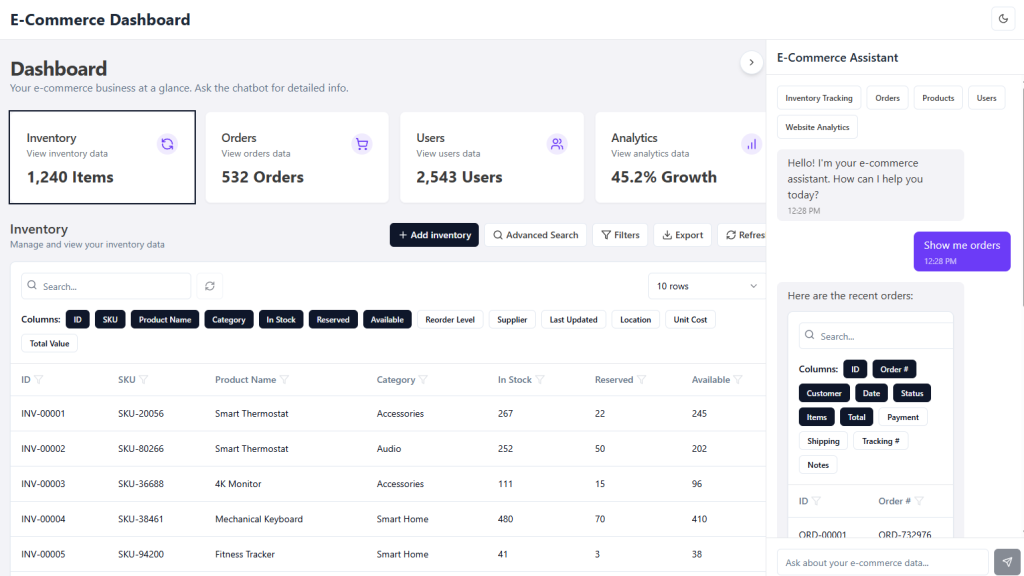AI Prototyping Tools Comparison: Firebase Studio vs. Lovable vs. V Zero
In the rapidly evolving field of AI-powered development tools, several platforms are competing to streamline the app prototyping process. Recently, Google released Firebase Studio, joining established tools like Lovable and V Zero (V0). As a developer at Noodle Agent AI, I took the opportunity to test these platforms with the same prompt to see how they compare when designing a front-end for our SQL database chatting application.
The Test Case: SQL Database Chat Application
Our application allows users to query SQL databases using natural language. It interprets human language queries, converts them to SQL, retrieves the data, and presents it to users who don’t need SQL experience. The prototype needed to include:
- A chat interface for querying data
- Data visualization capabilities
- Advanced search functionality
- Various sections for sales, inventory, users, and analytics
- Pre-set prompts for common queries
- Responsive tables for displaying thousands of rows of data
- Loading animations for data retrieval
Google's Firebase Studio: First Impressions
Google’s Firebase Studio was just released a couple of days ago as a major update to their established Firebase platform. Given Google’s resources, I had high expectations for this tool.
The experience was initially promising with a quick setup process that identified key requirements from my prompt:
- Persistent chatbot interface
- Data retrieval capabilities
- Responsive tables
- Loading animations
- Dashboard shell with modular components
However, when the actual prototype was generated, the results were underwhelming. The interface was basic and lacked many of the features I had specified in the prompt. The application had errors that weren’t easily fixable through the interface, and overall, the user experience felt incomplete compared to other solutions.

V0.dev : A Solid Contender
Zero (V0) also produced a functional prototype using the same prompt. Its strengths included:
- A clean dashboard with recent sales data
- Graph visualization (which wasn’t explicitly requested but was appropriate)
- Example prompts for database queries
- Functional sections for different data types
While V Zero’s design wasn’t as feature-rich as Lovable’s, it still provided a solid foundation that could be built upon with further prompting.

Lovable: The Surprise Winner
Using the exact same prompt in Lovable produced dramatically different results. The prototype included:
- A comprehensive dashboard with inventory, orders, and analytics sections
- Advanced search functionality and data filters (which I hadn’t explicitly requested)
- Exportable data tables
- Clean visualization of sales data
- Interactive elements that responded to user actions
- Pre-set prompts for common queries
The interface was intuitive and feature-rich, going beyond what was specified in the prompt. Lovable took some creative liberties, adding useful features like the scoreboard analytics and export functionality that enhanced the user experience without being requested.
When I tested the branding capabilities by uploading a screenshot with brand colors, Lovable quickly incorporated the purple color scheme into the interface without major UI changes—exactly as requested.

Key Takeaways
- Maturity matters: Despite Google’s resources, the newer Firebase Studio lagged behind more established tools like Lovable and V Zero in terms of feature implementation and error handling.
- Creative interpretation: Lovable stood out by intelligently adding features that weren’t explicitly requested but enhanced the application’s functionality, like advanced filtering and export capabilities.
- Branding implementation: All tools handled branding differently, with Lovable providing the most seamless integration of brand colors.
- Security considerations: Before deploying any AI-generated code to production, thorough security reviews are essential. Our team plans to have both design and development experts examine the code.